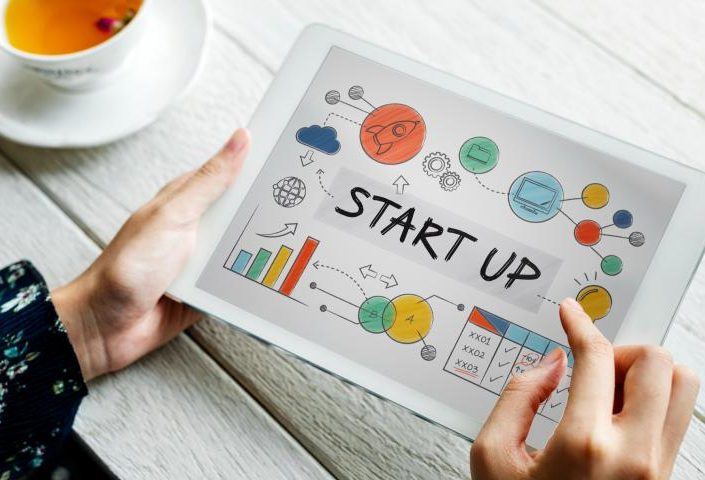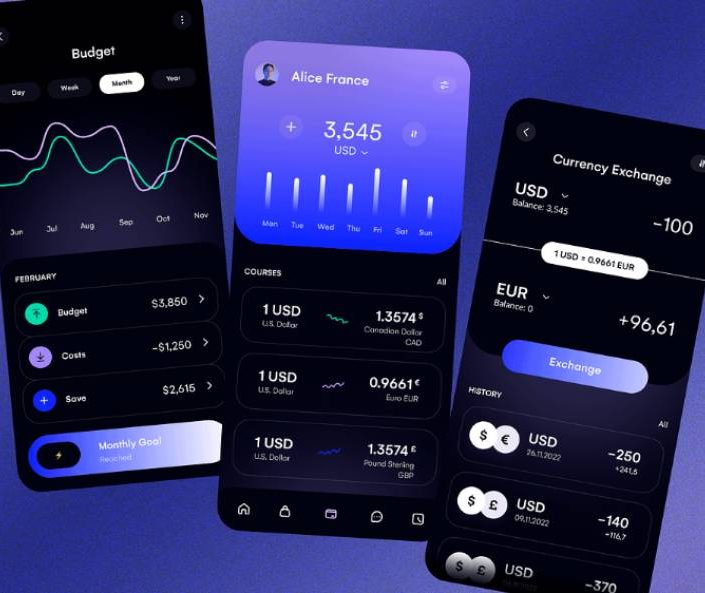-
6 mins read

In today’s fast-paced world, learning new skills is no longer a luxury—it’s a necessity. Whether you want to grow in your career, start a new hobby, or simply challenge your mind, continuous learning plays a huge role in personal and professional development. But here’s the challenge: who has the time?
Most people assume that acquiring a new skill requires hours of study every day. The truth? You can make remarkable progress with just 30 minutes a day—if you do it correctly.
This guide walks you through how to master new skills efficiently, even with a busy schedule. These methods are backed by psychology, habit research, and real-world examples of people who transformed their lives by dedicating a small slice of their day to learning.
Why 30 Minutes a Day Works
You might be wondering why 30 minutes is so powerful. Here’s why this specific amount of time produces great results:
1. It’s Manageable and Sustainable
Most people can’t consistently commit one or two hours daily. Between work, family, responsibilities, and personal downtime, long study sessions are unrealistic. But 30 minutes? Almost anyone can squeeze that into their routine.
2. It Activates Consistency
Skill-building depends more on frequency than duration. Learning daily—even in short bursts—reinforces neural pathways better than long, irregular sessions.
3. It Prevents Burnout
Short learning sessions reduce cognitive fatigue. You finish before you’re drained, which keeps motivation high and prevents overwhelm.
4. It Helps the Brain Process Information
Spacing out learning allows your brain to consolidate knowledge more effectively. This is known as spaced repetition, and it’s proven to improve memory retention.
What Skills Can You Learn in 30 Minutes a Day?
The beautiful part is that this strategy works for almost any skill, including:
- Learning a new language
- Coding or web development
- Digital marketing (SEO, social media, PPC)
- Drawing or graphic design
- Playing a musical instrument
- Cooking or baking techniques
- Fitness, mobility, and yoga
- Public speaking
- Writing or blogging
- Photography and videography
The key is choosing skills that are learnable in small units—something you can break into sessions of 30 minutes.
Step-by-Step Guide: How to Learn Any Skill in 30 Minutes a Day
Below is a complete roadmap with detailed, practical steps that will help you make real progress with minimal time investment.
1. Choose One Skill at a Time
Many people make the mistake of trying to learn several skills at once. When your attention is divided, your results suffer.
How to Choose the Right Skill
Pick something that meets these three criteria:
- You have a clear reason for learning it
- You’re excited about it
- You can practice it in small sessions
Having a strong “why” keeps you motivated, especially on days when you feel tired.
2. Set Clear, Measurable Goals
General goals like “learn guitar” or “become fluent in Spanish” are too vague. Instead, set specific, achievable milestones.
Examples
- “Learn 20 new Spanish words per week.”
- “Finish one lesson of a coding course every two days.”
- “Practice left-hand piano scales for 15 minutes daily.”
Clear goals give direction, trackable progress, and motivation.
3. Break the Skill into Micro-Skills
Every major skill is made of smaller components. Breaking your skill down makes learning easier and less overwhelming.
Example: Learning Web Development
- HTML basics
- CSS styling
- Responsive design
- JavaScript fundamentals
Example: Learning a Language
- Vocabulary
- Pronunciation
- Listening skills
- Grammar patterns
Spend each 30-minute session focusing on a single micro-skill.
4. Use the “15-10-5 Method”
A structured 30-minute routine makes learning efficient.
Here’s how it works:
- 15 minutes → New learning (video lesson, reading, tutorial)
- 10 minutes → Practice (doing exercises or trying the skill)
- 5 minutes → Review and reflection (summarizing what you learned)
This method keeps your brain engaged and helps you absorb information faster.
5. Build a Dedicated Learning Space
Your environment influences your productivity.
Create a small, distraction-free space:
- Clean desk
- Noise-canceling headphones
- Phone on silent
- Only essential tools
- Good lighting
A consistent learning environment signals your brain that it’s time to focus.
6. Use High-Quality Learning Resources
The internet is full of materials—but not everything is worth your time.
Recommended Platforms (Skill-Dependent)
- Languages: Duolingo, Babbel, Memrise
- Coding: FreeCodeCamp, Codecademy, Udemy
- Design: Skillshare, YouTube, Dribbble tutorials
- Business & Marketing: Coursera, HubSpot Academy
- Music: Yousician, Simply Piano
Using strong resources accelerates learning and keeps you engaged.
7. Track Your Progress Daily
When you measure progress, you stay motivated.
Ways to Track Progress
- Use a learning journal
- Track with apps like Notion or Evernote
- Create a weekly checklist
- Use habit trackers like Habitica or Streaks
Seeing your progress visually reinforces consistency.
8. Apply the Skill as Soon as Possible
Learning becomes meaningful when you use it.
For example:
- Learning a language? Text a native speaker.
- Learning design? Recreate a logo you like.
- Learning cooking? Make a dish using the technique.
- Learning SEO? Optimize your website or blog.
Real-world application deepens understanding and boosts confidence.
9. Use Spaced Repetition for Memory-Heavy Skills
If your skill involves memorization (vocabulary, coding syntax, musical notes), use spaced repetition systems (SRS).
Best Tools
- Anki
- Quizlet
- SuperMemo
These tools show information right before you forget it, making memorization more efficient.
10. Eliminate Multitasking
Multitasking slows learning.
During your 30 minutes:
- Don’t check your phone
- Don’t switch apps
- Don’t browse multiple tabs
- Don’t respond to notifications
Deep focus—even for a short time—produces better results than distracted study.
11. Use the “Two-Minute Rule” to Overcome Resistance
Some days you won’t feel like learning. That’s normal.
Use this technique:
Tell yourself: “I’ll only start for two minutes.”
Usually, once you start, momentum carries you through the rest of the session.
12. Join a Community for Accountability
We learn faster when we’re surrounded by others.
Community Options
- Facebook groups
- Reddit communities
- Discord learning groups
- Skill-specific forums
- Language exchange partners
A supportive community encourages consistency and provides feedback.
13. Celebrate Small Wins
Many people quit because they don’t notice their own progress.
Celebrate when you:
- Finish a lesson
- Complete a project
- Use a new phrase in conversation
- Improve your speed or accuracy
- Stick to your daily routine
Small wins keep your excitement alive.
14. Review Weekly and Adjust
Once a week, ask yourself:
- Are my goals still relevant?
- Am I enjoying the process?
- What improvements can I make?
- Do I need new resources?
Reflection ensures your routine stays efficient and aligned with your goals.
The Science Behind Learning in 30 Minutes a Day
To understand why this method works, let’s look at the cognitive science that supports it.
1. Neuroplasticity
Your brain is constantly forming new connections. Frequent, short learning sessions maintain steady stimulation, helping the brain rewire more effectively.
2. The Forgetting Curve
People forget most of what they learn within 24 hours without review. Daily learning with brief review combats this curve, improving long-term retention.
3. Habit Formation
According to psychology research, small daily habits are more effective than large, irregular efforts. A 30-minute habit is simple enough to stick with long term.
4. The Zeigarnik Effect
Your brain likes completing tasks—but it also likes completing tasks later. Stopping your learning session before you reach burnout keeps you mentally engaged, eager to continue tomorrow.
Real-Life Examples of People Who Used This Method Successfully
Case 1: Learning a Language in 30 Minutes a Day
A busy marketing manager learned Spanish to an intermediate level in one year—using only 30 minutes daily with Duolingo and YouTube.
Case 2: Learning Coding on a Lunch Break
A customer service employee learned web development during his lunch break every day and eventually switched careers to software engineering.
Case 3: Improving Fitness in Minimal Time
A musician committed 30 minutes to yoga each morning and significantly increased flexibility and energy levels within three months.
Sample 30-Minute Daily Learning Plan
Here’s a practical example of how your daily routine could look.
Day 1–7 (Week 1)
- Watch a 10–15 minute tutorial
- Practice for 10 minutes
- Review for 5 minutes
Day 8–14 (Week 2)
- Increase practice to 15 minutes
- Start tracking progress
Day 15–21 (Week 3)
- Add a mini project
- Join a community or group
Day 22–30 (Week 4)
- Complete a small milestone
- Review your progress
- Set new goals
Common Mistakes to Avoid
1. Expecting Fast Results
Skill-building takes time. Trust the process.
2. Comparing Yourself to Others
You’ll progress faster if you focus on your own journey.
3. Skipping Practice
Watching lessons is not the same as doing the work. Hands-on practice is essential.
4. Learning Without a Plan
Structure drives results. Use goals, systems, and a routine.
5. Giving Up Too Soon
Most people quit one step before growth becomes noticeable.
Conclusion
You don’t need hours of free time or expensive courses to learn something new. Just 30 minutes a day can transform your knowledge, skills, and confidence. The key is consistency, structure, and choosing the right approach.
Whether you’re learning a language, coding, cooking, or a creative skill, these strategies will help you make steady progress with minimal time investment.
Remember: small daily improvements lead to big long-term results.
FAQs
1. Can you really learn a new skill in just 30 minutes a day?
Yes. Consistent short sessions are scientifically proven to work better than long, irregular ones.
2. How long does it take to learn a skill with this method?
It depends on the skill, but meaningful progress usually appears within 30–60 days.
3. What is the best time of day to learn?
Any time you can focus—morning, night, or during breaks. Consistency matters more than timing.
4. What if I miss a day?
Don’t worry. Just continue the next day. The key is not giving up.
5. How do I stay motivated?
Choose a skill you enjoy, track your progress, join a community, and celebrate small wins.
If you’d like, I can also:
✅ Add SEO meta description & keywords
✅ Rewrite the article in a more conversational or academic tone
✅ Convert it into PDF, Word, or HTML
✅ Expand it to 3000+ words or shorten it to blog length
Weekly trending
How do I know if my startup will be profitable?
- 6 mins read
How to Turn a Simple Idea Into a Profitable Startup
- 6 mins read
Top Financial Management Apps for Modern Life
- 6 mins read
How to Learn New Skills in Just 30 Minutes a Day
- 6 mins read
AI vs Humans: Who Will Lead the Future?
- 6 mins read






